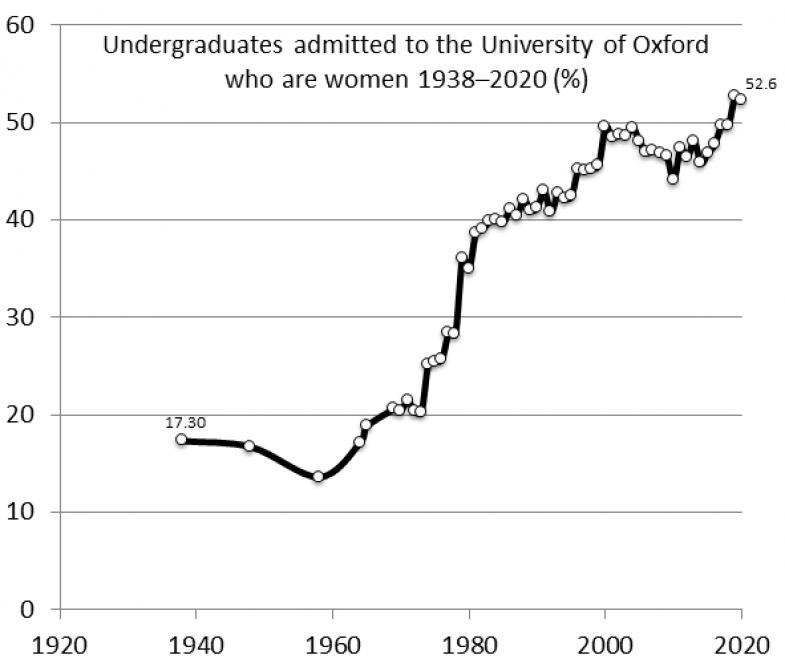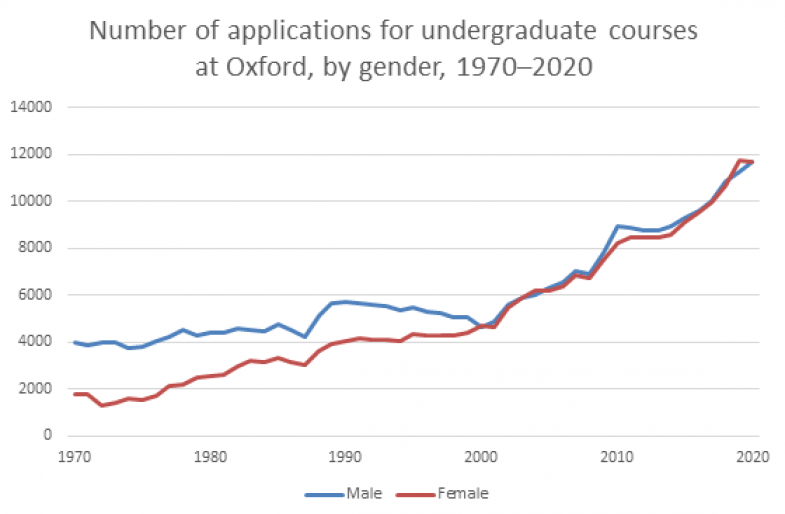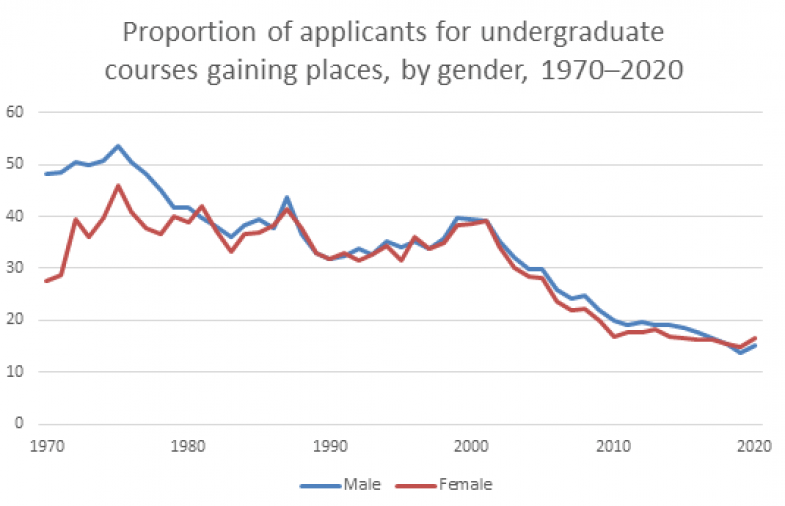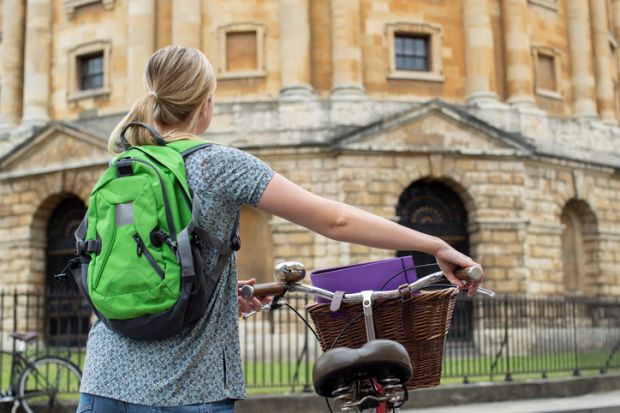With female undergraduates outnumbering their male colleagues at many universities these days, it is easy to forget how unthinkable this would have been throughout most of the 20th century.
Indeed, our institution, the University of Oxford, did not even allow women to take degrees until 1920. The centenary of that landmark was of such significance that we have been commemorating it throughout the current academic year – despite the pandemic. The stories of many courageous and determined pioneers were told and the achievements of their successors celebrated.
But it’s also important to look at the general picture – and when we do we can see that 1920 was far from being the end of the struggle for equality.
Before women were allowed to matriculate, they were deemed mere “students” – a category quite distinct from that of male undergraduates. But even after 1920, almost all Oxford’s colleges remained for men only – just five admitted women. Moreover, between 1927 and 1957, a quota operated to keep the share of women undergraduates low lest they drove male applicants to Cambridge!
This is reflected in the fact that the share of women undergraduates at Oxford actually dropped between 1938 and 1958 – from 17.3 per cent to 13.6 per cent.

The number and proportion of women undergraduates at Oxford began to trend upwards again following the lifting of the quota on female admissions in 1957. However, the most dramatic change came in 1974, when five all-male colleges began to admit women. A further 15 followed suit in 1979. As a result, in just a decade, from 1973 to 1983, the number of applications from women more than doubled, from 1,400 to 3,200, with a concomitant doubling of the proportion of women admitted – climbing from just 20 per cent of new undergraduates to nearly 40 per cent. Their success put the lie to assertions that women did not want to apply to Oxford and, anyway, would be unable to compete with men in the application process.
The proportion of female undergraduates continued to grow after 1983, albeit at a slower pace. However, after almost reaching parity at the turn of the millennium, it fell away slightly over the next decade or so. It is difficult to say why, not least as applications from women continued to grow strongly until they equalled those from men.

Since 1980, men had been slightly more likely to gain a place in almost all years, but the differences were marginal. From 2000, a slightly more noticeable gap began to open up, with female success rates being about two percentage points lower than those for men between 2006 and 2015. Most recently, this trend has been reversed, with women more likely than men to gain places in both 2019 and 2020.

Those years also saw the share of women in the undergraduate body breaking 50 per cent for the first time. That landmark was reached later than at most other UK universities, and Oxford’s share of women in its student body remains lower than both the national and Russell Group averages: 57 per cent and 55 per cent, respectively (for UK-domiciled students). These statistics mask differences in gender balance between subjects. Men outnumber women in physical sciences, engineering and maths both nationally and at Oxford; but even in subjects that women dominate in UK universities as a whole, Oxford’s pattern is slightly different. Women are less likely to choose social science and humanities subjects at Oxford, for example, than they are at other UK universities.
As girls continue to do better at school than boys, we might expect the proportion of undergraduate bodies made up by women to continue to grow. But gender parity is not a given across all aspects of the university. It is telling, for instance, that while the pioneering men’s colleges that admitted women in 1974 were known thereafter as “mixed”, they hung on for some years to their all-male fellowship. And, to this day, women continue to be under-represented in academic careers, particularly at higher levels.
Much has certainly been achieved, but action to promote diversity of all types and in all aspects of the university’s life continues.
Elizabeth Baigent is reader in the history of geography and Claire Hann is equality and diversity officer in the School of Geography and the Environment at the University of Oxford. With Susan Squibb, they are researching the history of women in the School of Geography.
Register to continue
Why register?
- Registration is free and only takes a moment
- Once registered, you can read 3 articles a month
- Sign up for our newsletter
Subscribe
Or subscribe for unlimited access to:
- Unlimited access to news, views, insights & reviews
- Digital editions
- Digital access to THE’s university and college rankings analysis
Already registered or a current subscriber? Login








